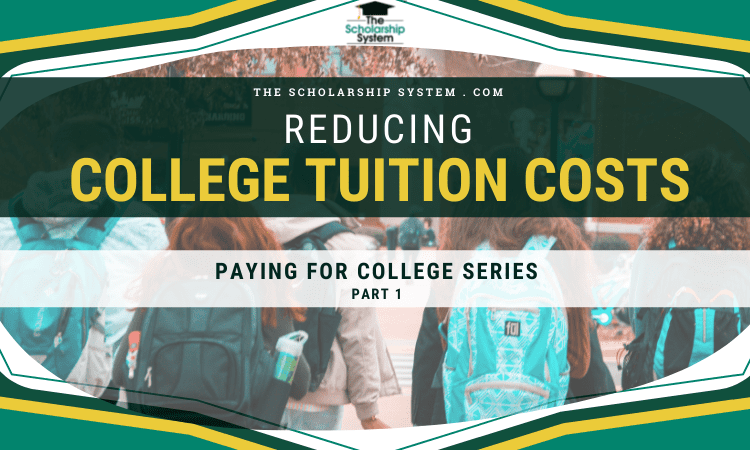Updated on May 20th, 2024
So your student is planning on attending college. You’re excited, they’re excited.. so then comes the research. Or perhaps your student is already admitted into college. Again, very exciting! That’s such an accomplishment!
And then comes the bill – and college tuition costs are not cheap. Next thing you know, you have a gaping hole in your stomach because you realize just how expensive college is going to be. You ask yourself: Do we settle for loans? Do we choose a more affordable option but that isn’t their number one choice? How do we make this as affordable as possible without sacrificing our child’s education?
These are all fantastic questions – which is why we are hosting the Paying for College series.
We are going to cover all this and much more so that when the time comes to pay the bill, you have options OTHER THAN getting a bunch of student debt.
If your student is trying to avoid debt, scholarships are a great option. They can cover a range of college costs and don’t have to be paid back. If you and your student want to learn about scholarships, sign up for our free college scholarship webinar! Take a quick trip over to http://thescholarshipsystem.com/freewebinar to reserve a spot today.
Paying for College Part 1: Reducing College Tuition Costs
As always, we know that scholarships, grants, and cash awards are king. They are free monies that can be used to pay your college bill. And the best part is that students can secure enough scholarships, grants, and cash awards to have their entire bill paid for plus some! (We’ve seen it, and we’ve done it!)
Now, what about the other side of the equation? The balance that needs to be covered!
From what I’ve seen, most families just accept the total cost of college and consider it to be fixed. They think that what the college tells them is absolutely what they have to pay. But what if I told you there are alternatives to bring college tuition costs down?
In this short video, we are going to cover tips on reducing college tuition costs so that you can owe less in the first place. No matter what college or university you are considering, this absolutely applies!
 |
|
Find out what your family can do to make Paying for College easier and work towards graduating debt-free:
Resources:
- AP (Advanced Placement): https://apstudent.collegeboard.org/home
- IB (International Baccalaureate): http://www.ibo.org/
- CLEP (College Level Examination Program): https://clep.collegeboard.org/
**Please note: These exams above will only result in college credit if passed with certain score levels. For example, many AP classes only result in college credit if a student receives a 3 or above (out of 5).
The amount of college credit a student receives depends on the test results AND the university. Many schools have clear breakdowns of how much credit they give based on the specific score so it’s always a good idea to request that information from any colleges your student is considering.
Did you miss Part 1-5? Watch them below!
- Part 1: Reducing College Tuition Costs
- Part 2: Reducing Your Tuition Bill (Continued)
- Part 3: Stop Losing Money When Transferring Credits
- Part 4: Study Abroad: The Pros, The Cons, The Costs
- Part 5: Making Money with Flexible Jobs in College
- Part 6: Taking Control of Living Expenses in College
If your student is trying to avoid debt, scholarships are a great option. They can cover a range of college costs and don’t have to be paid back. If you and your student want to learn about scholarships, sign up for our free college scholarship webinar! Take a quick trip over to http://thescholarshipsystem.com/freewebinar to reserve a spot today.





I have been looking for a place like this for quite a very long time.